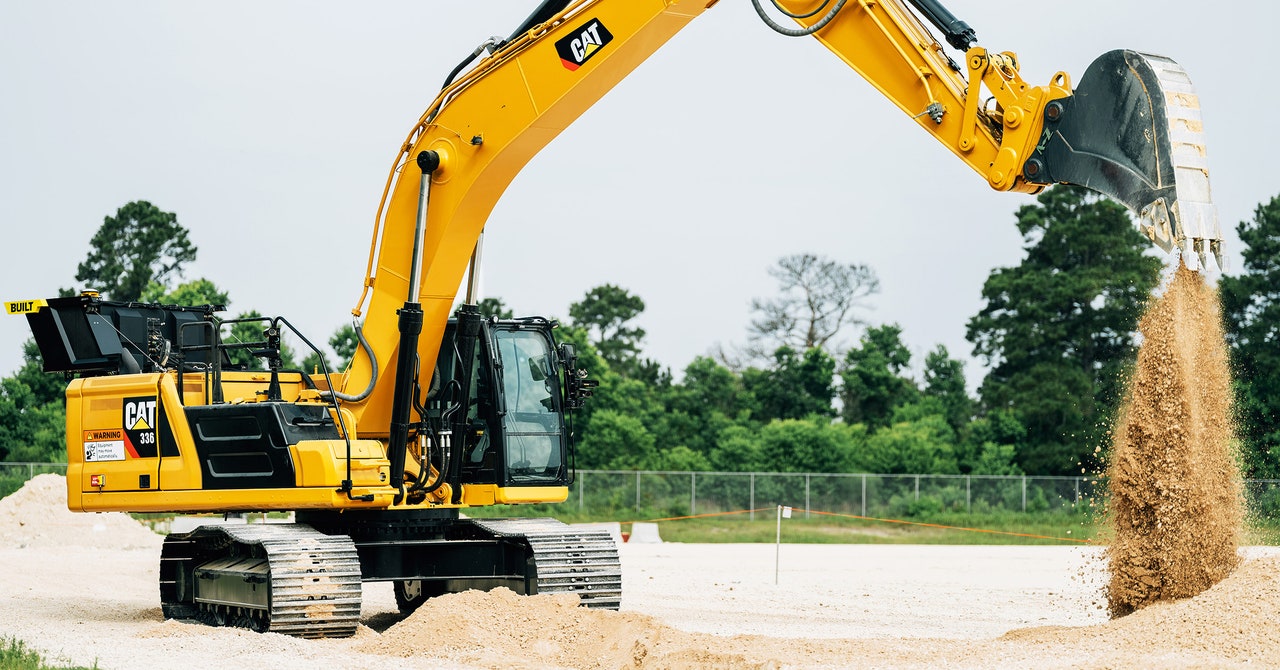When will those trials lead to autonomous construction machines that actually do work on construction sites? “We’ll get there,” says Weiss, but Caterpillar’s partners need to be comfortable with the maturity of the technology. “There are risks involved, and we’re on that journey, learning with them as we go, so that when we’re commercially ready, they’re ready and comfortable with the product.”
Weiss says Caterpillar started working on automating mining operations and construction sites around the same time, more than a decade ago, but automation happened faster in mines for a number of reasons.
First, mines have semi-permanent roads and being underground means you can safely secure the area. And since mines are generally located in remote places where it is difficult to house and feed people, automation may be more appealing. Construction sites, on the other hand, are often short-lived and in a state of constant change, with no permanent roads.
Caterpillar, together with startup Teleo, states that the road to fully autonomous construction sites must first go through a phase in which semi-automatic equipment is operated remotely by workers elsewhere. At this stage of development, people with the necessary training will be able to work with semi-autonomous machines anywhere in the world using an interface similar to a video game, possibly even working from home. At the same time, AI experts will identify repetitive tasks suitable for automation.
Heavy machine operators today may choose to use some limited automation features, such as automatic leveling to level surfaces when using a bulldozer. But the goal, says Caterpillar chief engineer Michael Murphy, is to enable one person to operate four or five machines at once by letting algorithms do much of the work.
Caterpillar equipment in automation experiments today resembles conventional machines. However, Volvo and Bobcat’s parent company Doosan, which has pledged to bring its autonomous Concept-X project to market by 2025, is already designing machines without cabs that house a human operator.
Volvo Autonomous Solutions’ head of communications Ceren Wende says the company has a single cabless dump truck at work at a limestone quarry in Switzerland and seven autonomous trucks at a mine in Norway, but no autonomous heavy equipment on construction sites.
An excavator without a human operator cab looks striking, says Anthony Levandowski, CEO of startup Pronto.ai, but he predicts such machines are “very, very far” from widespread use.
Levandowski was once a founding member of the pep squad and predicted that self-driving cars would soon take over. Before pleading guilty to stealing confidential information from Google’s Waymo autonomous driving division (and being pardoned by former President Trump), he helped catalyze the automated driving industry when he programmed a self-driving Prius in 2008 to drive the San Francisco-Oakland crossing. Bay Bridge (with police escort) to deliver a pizza.
“I was like, ‘I think we’re about two years away from commercializing this product,'” says Levandowski. “That was 15 years ago.” Today, he believes that self-driving cars have fallen behind. Pronto, like Caterpillar, focuses on automating trucks that drive on predetermined routes in mines and quarries.
Although the trucks can weigh more than 100 tons, it is significantly easier than autonomous driving on public roads, as the vehicles travel on simpler, private road networks. Employees are trained in how to behave and what to expect around the autonomous machines.
Levandowski says Pronto is not in the business of automating construction. He expects little progress will be made in the coming years by taking on simpler tasks such as auto-leveling with a bulldozer and water trucks for dust control.
Built CEO Noah Ready-Campbell says his company’s research and development efforts are now focused on the robotic pile driver, despite the company’s history of automating bulldozers, skid-steer loaders and excavators. While the company showed that it was possible to dig trenches with automated excavators, it ran into obstacles when trying to convince customers to embrace automation. “You have to solve a pain point big enough to drive adoption,” says Ready-Campbell. “People will only change behavior if it is worthwhile.”

